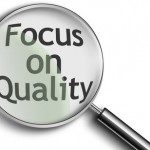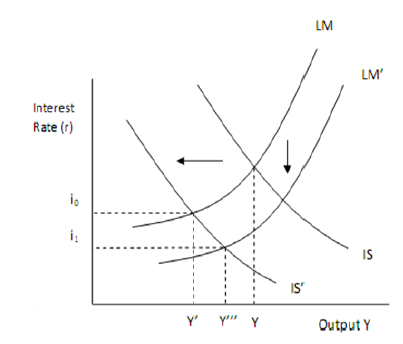
Snowball sampling (also known as chain-referral sampling) is a non-probability (non-random) sampling method used when characteristics to be possessed by samples are rare and difficult to find. For example, if you are studying the level of customer satisfaction among elite Nirvana Bali Golf Club in Bali, you will find it increasingly difficult to find primary data sources unless a member is willing to provide you with contacts of other members. This sampling method involves primary data sources nominating another potential primary data sources to be used in the research. In other words, snowball sampling method is based on referrals from initial subjects to generate additional subjects. Therefore, when applying this sampling method members of the sample group are recruited via chain referral. Also, snowball sampling is the most popular in business studies focusing on a specific company that involve primary data collection from employees of that company. Once you have contact details of one employee she/he can help you to recruit other employees to the study by providing contact details. There are following three patterns of snowball sampling: 1. Linear snowball sampling. Formation of a sample group starts with only one subject and the subject provides only one referral. The referral is recruited into the sample group and he/she also provides only one new referral. This pattern is continued until the sample group is fully formed. 2. Exponential non-discriminative snowball sampling. The first subject recruited to the sample group provides multiple referrals. Each new referral is explored until primary data from sufficient amount of samples are collected. 3. Exponential discriminative snowball sampling. Subjects give multiple referrals, however, only one new subject is recruited among them. The choice of a new subject is guided by the aim and objectives of the study. Application of Snowball Sampling: an Example Application of…

Biersteker (1995) explores apparent triumph of liberal economic ideas in the developing world by concentrating on the nature of change in economic thinking. According to this article dramatic changes in economic thinking in developing countries took place mainly during the period of 1980s and 1990s. Differences in perceptions between countries and their impact on implementing liberal economic ideas are stressed by Biersteker (1995) to explain variations on the levels of economic liberalisation amongst Latin American countries. Biersteker (1995) offers an interesting account of the impact of liberalism on developing countries. Specifically, Biersteker (1995) discounts the impact of following four factors in facilitating change in economic thinking – perception of superiority of liberal ideas by developing countries, exercise of power by international financial institutions such as IMF and the World Bank, intensifying forces of globalisation, and collapse of socialism. Instead, Biersteker (1995) offers explanation for change in economic thinking from four different perspectives: ideational, systematic, domestic interest, and international institutional perspectives. A noteworthy shortcoming associated with this approach is associated with being overly idealistic. While the author accepts this fact by stating that “each of these should be considered as an idealised construction” (Biersteker, 1995, p.181), nevertheless, the idealised approach undermines the level of practical relevance of the work. Reyes and Sawyer (2011) offer an alternative approach to the work of Biersteker (1995) by identifying perception of superiority of liberal ideas as the most significant factor fuelling change in economic thinking in developing counties during the last three decades of the last century. References Biersteker, T.J. (1995) “The “triumph” of liberal economic ideas in the developing world” in Global Change, Regional Response: The New International Context for Development, editor Stallings, B., Cambridge University Press Reyes, J.A. & Sawyer, C.W. (2011) “Latin American Economic Development” Taylor & Francis

Today many innovations are associated with businesses as opposed to individuals. There are several reasons behind this phenomenon. Rapid development of knowledge management practices and processes in companies can be mentioned as one of the primary reasons behind many innovations being associated with businesses as opposed to individuals. Levels of sophistications of knowledge management systems in organisations have been increasing with rapid paces during last several years and this tendency has had positive correlation with creativity and innovation in most organisations. This argument can be better explained by referring to the concept of knowledge life cycle. According to this concept, knowledge life cycle comprises capture, verification, codification, integration, synthesis, dissemination and utilisation stages. Towards the end of the last stage organisational knowledge has a great potential to be used to make innovations of products, services and processes through collaboration and teamwork. Senior level management in increasing numbers of businesses do understand the importance of creativity and ‘thinking outside of box’ in terms of producing innovative products and services and attempt to shape organisational culture accordingly. One of the most innovative companies of the present day – Google is a suitable case study to justify this point. Specifically, Google offices around the globe are famous for their unique, innovative and highly informal design to encourage creativity amongst employees. Moreover, Google practices ’20 per cent rule’ according to which employees are free to spend one fifth of their paid time at work doing activity of their choice that does not have to be aligned with the corporate strategy (Kotter, 2013). Such a move enables Google to introduce innovative products and services in a regular basis allowing the company to diversify to a great extent. Many other companies are also following this path to varying extents in terms of creating informal work environment…

The twenty first century has been accepted as a century of information with the amount of information increasing with a geometrical progression, however this tendency is associated with a set of challenges that include protection of intellectual property which can be defined as any patterns of original creation that can be purchased or sold. Main forms of intellectual property protection are patenting, trademarks, trade secrets and copyright. Patenting is a popular way of protecting intellectual property, and patents are obtained for inventions that have potentials to generate revenues for inventor. Patents allow the patent holder to market the invention and patenting rights to the third party or license the invention when retaining intellectual property rights. Patents are considered to be intangible assets and many global businesses possess considerable amount of such type of asset. For example, gross carrying amount of patents of Ford Motor Company has exceeded USD 27 million by 2012 with the net carrying amount of USD 7 millions (Annual Report, 2012). Due to increasing numbers of innovations, and willingness of businesses to take advantage of these innovations there are many patent infringement lawsuits amongst many multinational corporations at any given time. For example, one of the most recent and noteworthy patent infringement disputes is the one between Finland-based global communications corporations – Nokia and HTC its Taiwan-based direct competitor. Patent infringement dispute initiated by Nokia for the use of Broadcom and Qualcom chip for HTC One model has attracted extensive media coverage due to its scale and significance and Nokia has emerged as a victor in the dispute with detrimental impacts on HTC in terms of damage to the brand image and future profits (Arthur, 2013). Moreover, there are instances where businesses decide to end their patent infringement disputes due to cost considerations of lawsuits, damage to…

It has been stated that Total Quality Management (TQM) “is difficult to define precisely because it is a philosophy of total organisational involvement in improving all aspects of quality” (Allen, 2004, p.68), nevertheless, in a broad manner TQM can be defined as a quality improvement philosophy that adopts a holistic approach and requires active participation of all employees. Initially developed by Edward Deming in 1940s, TQM became a buzzword in the US several decades later due to its implementation by a range of large companies such as Ford Motor Company, Motorola, and Xerox. University and colleges, as well as, many other organisations in all industries can apply TQM elements in practice in order to increase the level of customer satisfactions significantly. TQM elements include understanding customer needs, doing things right the first time, continuous improvement, regular assessments of quality related costs, developing effective systems and procedures etc. ‘Getting things right the first time’ is one of the fundamental TQM elements. This approach substitutes quality inspection practices with constant search and utilisation the potentials for quality improvement. The approach of ‘getting things right the first time’ can benefit the college in terms of avoiding waste of resources, and saving substantial amounts of time and money. TQM principle of continuous improvement is associated with Kaizen philosophy and its applicability is extended beyond organisational environment to cover personal life, relationships, social life etc. Main advantages of Kaizen principles for the college The value of continuous improvement or Kaizen for the college is even grater taking into account the fact that implementation of this principle does not require vast financial investments on behalf of the college and improvements can be introduced in a gradual manner. Another vital TQM element can be identified as understanding customer needs in the first place so that relevant products…

Great Depression is rightly perceived as the main stimulating factor behind the emergence of Keynesian framework and ISLM model and the model proved effective to deal with the crisis to a certain extent. However, a set of significant shortcomings associated with ISLM model such as neglecting expectations, static nature of the model, unrealistic closed-economy assumption, assuming prices to remain fixed etc. have led to the evolution of alternative models. Proposed by Robert Mundell and Marcus Fleming, the Mundell-Fleming model represents an economic model that explains the nature of relationship between the nominal exchange rate and the output of the economy in the short run. Traditionally, this model has been used to justify the argument that maintenance of fixed exchange rate, movement of free capital and independent monetary policy in a simultaneous manner is impossible to achieve. The main difference between Mundell-Fleming model and ISLM model relates to the fact that while ISLM model is effective under a closed-economy, Mundell-Fleming model attempts to analyse an open-economic system. In other words, unlike ISLM, impacts of international finance and international trade are acknowledged in Mundell-Fleming model. Different countries respondent the global economic crisis of 2007 – 2009 differently taking into account unique set of internal and external factors, however, macroeconomic responses to the crisis by many developed counties can be effectively explained with the use of ISLM model. Dramatic decline in the level of consumer spending which also caused the decline of consumer confidence in markets has facilitated the shift of IS curve in ISLM model to the left. Range of responses by governments to this event included reducing the level of interest rates significantly. For example, interest rates were reduced in US, UK and Japan to 0.25 per cent, 0.5 per cent and 0.1 per cent respectively. Reduction of the level of…

Marketing research can be specified as the main tool to impact consumer behaviour in order to increase the levels of consumer loyalty and achieve long-term growth of the businesses. Marketing research can be divided into the following stages: The first stage is associated with problem definition. Range of marketing research problems related to consumer behaviour may include but not limited to assessment of impacts of prices changes or re-branding initiatives on consumer attitudes, establishing the levels of brand value amongst target customer segment etc. The second stage relates to secondary data collection and analysis. Relevant data available in government publications, statistical information, as well as, findings of previously published marketing research papers can be utilised in an extensive manner during this stage. The third stage in marketing research process refers to collection of primary data. The majority of marketing researches are facilitated through primary data collection and analysis. The most popular methods of primary data collection for marketing research include surveys, focus groups, interviews, storytelling, experiments and observations. Moreover, marketing research can also be conducted with application of conjoint analysis, purchase panels, database marketing and netnography. The fourth stage involves primary data analysis. Data analysis can be qualitative, quantitative or integrated according to the nature of problems being researched. Adoption and maintenance of an objective approach plays important role at this particular stage of marketing research process. The fifth stage is devoted to formulation of recommendations. Specifically, alternative set of recommendations or inter-related recommendations can be offered to senior level management on the basis of primary data analysis. The sixth stage in marketing research process involves selection and implementation of a strategy. In most cases internal or external members of team responsible for conducting marketing research do not engage in implementation of recommendations in practical levels. Therefore, it is important…
By John Dudovskiy
Category: Consumer Behaviour

The topic of consumer behaviour is one of the massively studied topics by the researchers and marketers in the past and still being studied. Researchers show different reasons as to why consumer behaviour has been the topic of many academics and researchers. One of the common views is that understanding consumer behaviour has become a factor that has a direct impact on the overall performance of the businesses (Kotler and Keller, 2012). Another view suggests that understanding consumer behaviour has become crucial especially due to fierce competition in retail industry in the UK and worldwide (Lancaster et al, 2002). This chapter will introduce some other areas of research background of consumer behaviour addressing the works of researchers and marketers. Moreover, consumer decision making process, in particular, five stages of consumer decision making process will be discussed in detail. Introduction It is worth noting that consumer buying behaviour is studied as a part of the marketing and its main objective it to learn the way how the individuals, groups or organizations choose, buy use and dispose the goods and the factors such as their previous experience, taste, price and branding on which the consumers base their purchasing decisions (Kotler and Keller, 2012). One of such studies of consumer buying behaviour has been conducted by Acebron et al (2000). The aim of the study was to analyze the impact of previous experience on buying behaviour of fresh foods, particularly mussels. In their studies the authors used structural equation model in order to identify the relationship between the habits and previous experience on the consumer buying decision. Their findings show that personal habits and previous experience on of the consumers have a direct impact on the consumers’ purchase decision in the example of purchasing fresh mussels. They also found that the image of the…

Motivation, personality and perception belong to the list of central themes in the area of consumer behaviour. Maslow’s Hierarchy of Needs (1943) is one of the most significant theoretical frameworks in the area of human motivation and this theory relates to the study of consumer behaviour in a direct way. Maslow (1943) divides human needs into five layers arranged in a hierarchical manner: psychological, safety, social, and esteem needs. In simple terms, the core idea behind Maslow’s Hierarchy of Needs (1943) can be explained in a way that businesses need to appeal to the most immediate and urgent needs of customers in order to generate sales. For example, an individual who is yet to satisfy his or her safety needs is not motivated to purchase products and services associated with high social status, thus individuals belonging to this category should not be targeted for premium range of products and services. From this perspective, Maslow’s Hierarchy of Needs (1943) is related to segmentation, targeting and positioning practices to a certain extent. Personality represents another important physiological variable with certain implications on consumer behaviour and personality elements or traits include self-confidence, sociability, adaptability, deference etc. In-depth knowledge about important aspects of personalities of target customer segment allows businesses to manipulate with elements of marketing mix in general and promotion element in particular in terms of making an effective appeal. For example, marketing research findings of a premium brand watch manufacturing company may indicate that the majority of representatives of target customer segment are highly ambitious individuals aspiring to top management positions in multinational corporations. This information can be used to impact consumer behaviour by engaging in product placement marketing strategy via displaying the use of the premium watch by highly successful senior managers in various media productions. High levels of subjectivity of…
By John Dudovskiy
Category: Consumer Behaviour

The most popular approaches to consumer behaviour can be divided into cognitive, behaviourist and psychodynamic categories. Cognitive approach to consumer behaviour focuses on information processing capabilities of consumers (Schmitt, 2003). Specifically, according to cognitive approach environment and social experiences provide individuals with abundant information to be processed, and the outcome of information processing results in individuals behaving in certain ways as consumers. For example, individuals may receive information about forecasted economic downturn in a national level and this information can serve as a stimulus to behave in certain manners. Specifically, according to cognitive approach although the forecasted economic downturn has not happened yet, nevertheless consumers may reduce levels of their spending budgets as a response to the stimulus. Behaviourist approach to consumer behaviour, on the other hand, is associated with the impact of external events. Lantos (2010) link this approach to infamous experiments of Russian scientist Ivan Pavlov and these experiments involved developing certain behavioural patterns via external factors. Practical implementation of this approach in the field of marketing can be observed in relation to Nescafe products. Specifically, integrated marketing strategy of Nescafe attempts to foster a specific pattern of behaviour amongst target customer segment whereby consumption of a cup of Nescafe coffee has to be the first thing to do in the morning. Importantly, Loudon et al. (2010) make a clear distinction between cognitive and behaviourist approaches to consumer behaviour in a way that in cognitive approach information from external sources are processed by consumers in apparent manners, whereas in behaviourist approach consumers may not be fully aware of the impact of external environment. Accordingly, Loudon et al. (2010) consider behaviourist approach to be superior compared to cognitive approach in terms of motivating perspective consumers to commit to the purchase. Lastly, psychodynamic approach “includes all theories in psychology that…
By John Dudovskiy
Category: Consumer Behaviour
